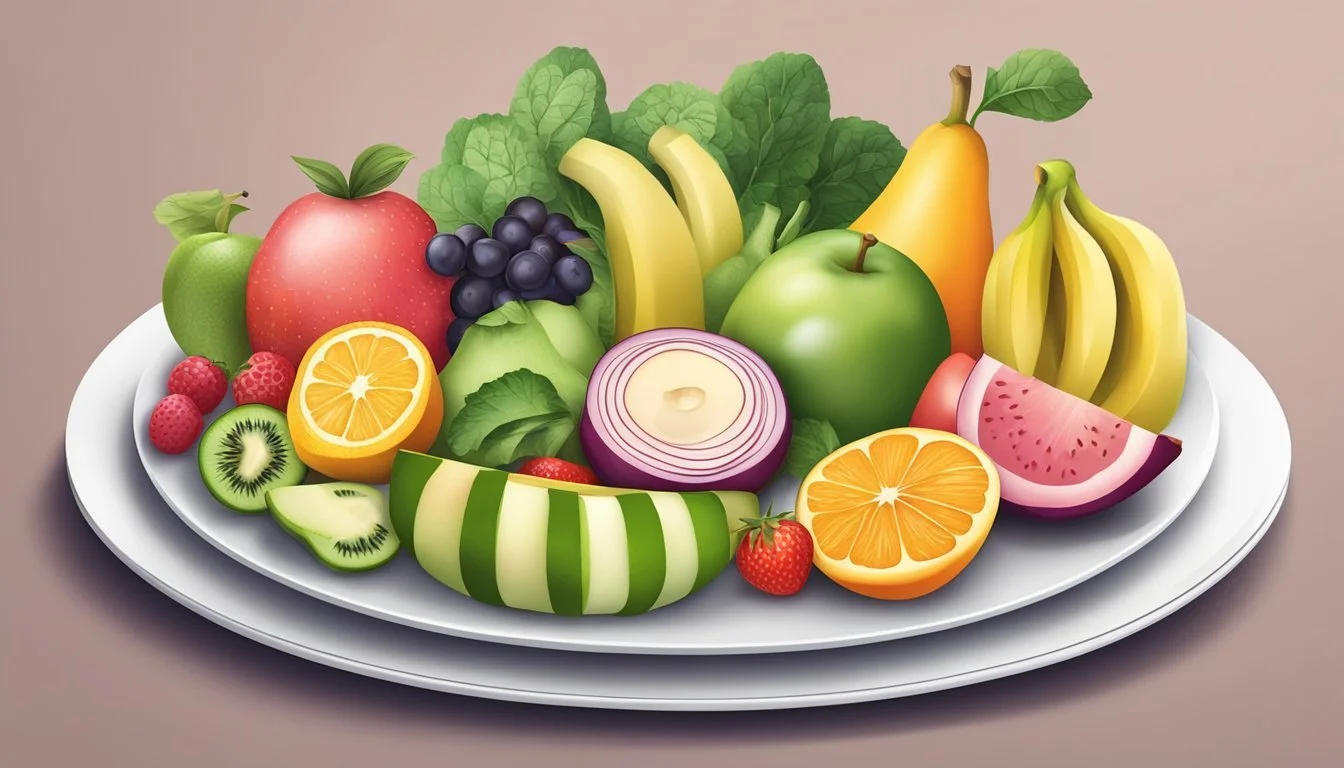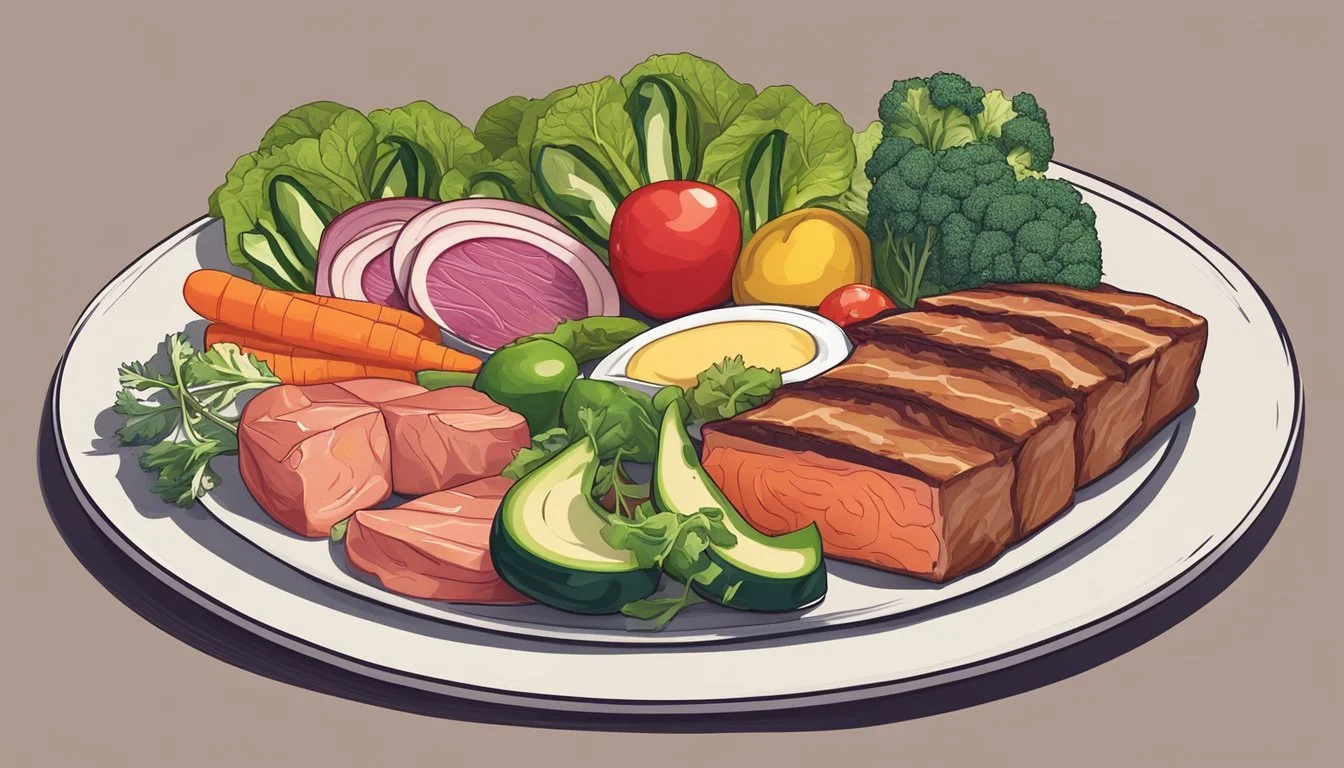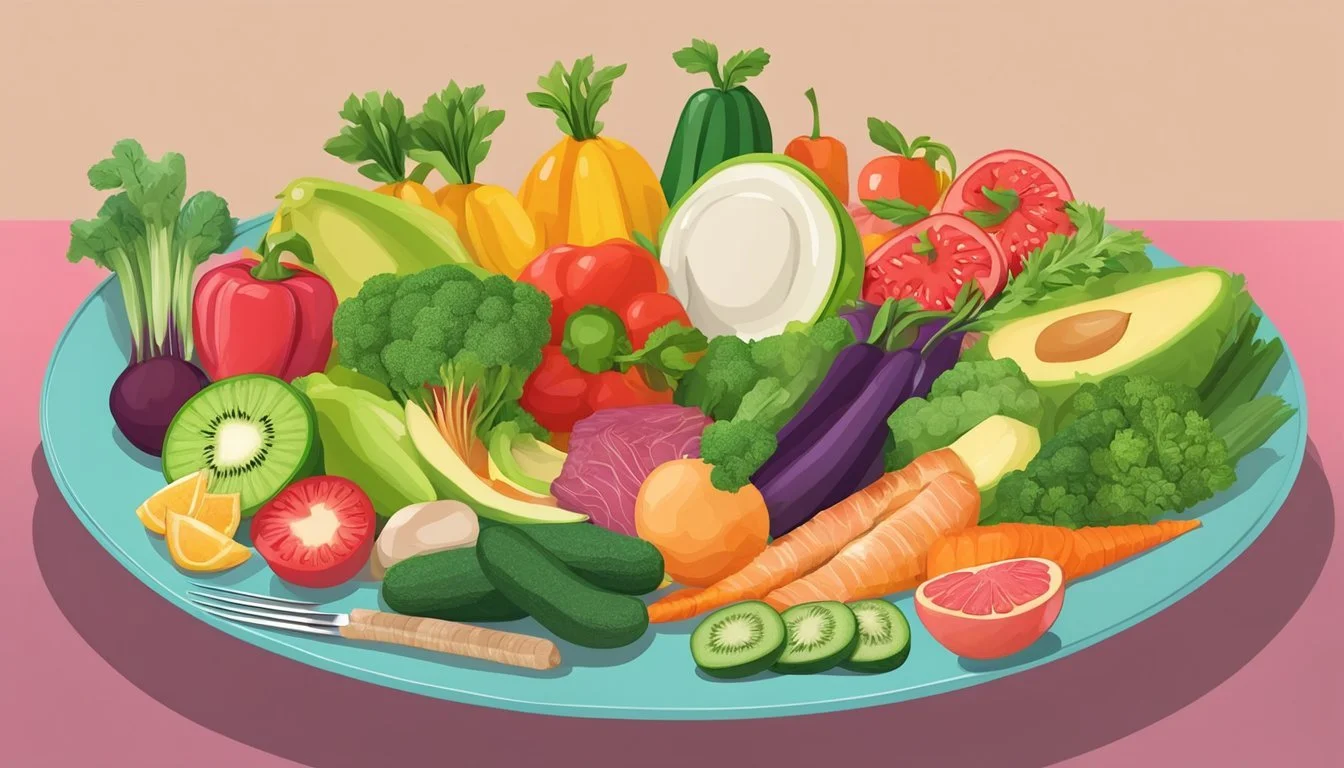How to Create a Balanced Paleo Plate
A Nutritional Guide to Portioning Your Meal
Creating a balanced Paleo plate revolves around the principles of the Paleo diet, which is centered on whole, unprocessed foods that aim to mimic the eating patterns of our Paleolithic ancestors. The diet consists primarily of vegetables, fruits, nuts, seeds, lean meats, and fish, emphasizing food quality and nutrient-density. When assembling a Paleo plate, the goal is to choose foods that have undergone minimal processing, ensuring the retention of their natural nutrients and benefits.
A Paleo plate typically includes a generous portion of vegetables, providing essential vitamins, minerals, and fiber. Adding a variety of colorful vegetables not only ensures a range of nutrients but also creates an appealing visual presentation. Lean proteins such as grass-fed meat, free-range poultry, or wild-caught fish constitute a significant part of the plate. These proteins are crucial for their contribution to muscle repair and immune function.
Healthy fats are another fundamental component of a balanced Paleo plate. These can come from sources like avocados, olives, nuts, seeds, and quality oils such as olive or coconut oil. Healthy fats support overall calorie needs, help with the absorption of fat-soluble vitamins, and contribute to satiety. Emphasizing these elements creates a nutritious and satiating meal that aligns with the Paleo philosophy of eating wholesome, unprocessed foods for optimal health.
Understanding Paleo Principles
The Paleo diet focuses on emulating the diet of ancient humans, prioritizing whole, unprocessed foods. This section delves into the essential elements of this dietary approach.
Definition and Origin of Paleo
Paleo, short for Paleolithic, refers to the era of early humans who hunted and foraged for their food. The Paleo diet advocates eating foods presumed to be available to Paleolithic humans, steering clear of modern processed foods. Fundamentally, it is built on the premise that human genetics have largely remained unchanged since the dawn of agriculture and that the body is still optimized for the pre-agricultural diet.
Core Components of a Paleo Diet
The Paleo diet emphasizes the consumption of:
Proteins: from sources such as pasture-raised meats, wild-caught fish, and free-range eggs.
Vegetables and Fruits: a diverse assortment that is rich in vitamins and minerals.
Healthy Fats: obtained from nuts, seeds, avocado, olive oil, and coconut oil.
It systematically excludes:
Grains
Legumes
Dairy
Refined Sugar
The belief is these foods were not part of the human diet during the Paleolithic era and many people may not be well adapted to digest them.
Health Benefits
Advocates suggest that a Paleo lifestyle may lead to various health benefits such as improved blood sugar levels, better gut health, reduced inflammation, and weight loss. Yet, these claims should be taken in context, understanding that individual results can vary and that a balanced diet tailored to personal health needs is recommended.
Common Misconceptions
One might think that the Paleo diet strictly means consuming massive quantities of meat or that it is highly restrictive. In reality, it emphasizes a balanced plate with plenty of plant-based foods and regards meat as a complement rather than the centerpiece. Another misconception is the perception that it completely bans carb intake; instead, it prioritizes nutrient-dense, low-glycemic carbohydrates from vegetables and fruits over grains and refined sugars.
Building Your Paleo Plate
Creating a balanced Paleo plate involves selecting high-quality proteins, a variety of vegetables, incorporating healthy fats, and adding a moderate amount of fruits and nuts. Each of these components plays a crucial role in following a Paleo diet effectively.
Protein Sources
On a Paleo plate, proteins are essential for muscle repair and overall bodily function. They should consider:
Meat: Ideally grass-fed beef or lamb
Fish: Wild-caught varieties like salmon or mackerel for omega-3 fatty acids
Eggs: Free-range for higher nutrient content
Chicken: Free-range or organically raised
Portions of protein are typically about the size of the palm of one's hand or approximately 1-2 palm-sized servings per meal.
Vegetable Selection
Vegetables are the cornerstone of nutrients on a Paleo plate, providing fiber, vitamins, and minerals. They typically fill at least half of the plate and should include a mix of:
Leafy Greens: Such as kale or spinach
Cruciferous Vegetables: Like roasted Brussels sprouts or broccoli
Starchy Vegetables: Including sweet potatoes or beets, in moderation
Incorporating Healthy Fats
Healthy fats are key to satiety and absorbing fat-soluble vitamins. Choices should include:
Olive Oil: Extra virgin for dressings or low-heat cooking
Avocado Oil: High smoke point, suitable for most cooking needs
Coconut Oil: For high-heat cooking or as a dairy-free fat source
Nuts and Seeds: Almonds, macadamias, or flaxseeds in small handfuls as they are calorie-dense
Balancing Fruits and Nuts
Fruits and nuts can be enjoyed in moderation on a Paleo plate. They provide energy, fiber, and healthful nutrients but should not overwhelm the plate. One should opt for:
Fruit: Berries or apples for their lower glycemic index
Nuts: As a snack or garnish, avoiding overconsumption
It is important to balance these sweeter and more calorie-dense items with the other elements of the plate to maintain the Paleo diet's focus on whole, unprocessed foods.
Avoiding Non-Paleo Foods
Creating a balanced Paleo plate involves not only understanding what to eat but also what foods to exclude. Paleo guidelines emphasize foods that are presumed to have been available to humans prior to the establishment of agriculture, and as such, certain food groups are avoided.
Grains and Processed Sugars
When preparing a Paleo diet, one should eliminate grains such as wheat, rice, corn, and barley. These are associated with the agricultural era and are not part of the Paleo regimen. The same applies to processed foods, especially those high in processed sugars. Sugars found in candies, sodas, and many packaged snacks can cause spikes in blood sugar levels and are not in line with Paleo eating principles.
Grains to avoid include:
Wheat
Rice
Oats
Common processed foods with high sugar content:
Candy
Soda
Pastries
Dairy and Legume Products
Dairy products, while a source of calcium and protein in modern diets, were not consumed by Paleolithic ancestors and are therefore excluded from the Paleo diet. Another group to avoid includes legumes, which encompasses beans, lentils, peanuts, and peas. Though nutritious, legumes contain anti-nutrients like phytates and lectins, typically not embraced by the Paleo philosophy.
Dairy products to eliminate:
Milk
Cheese
Yogurt
Legumes to steer clear from:
Beans
Lentils
Peanuts
Refined Oils and Trans Fats
Lastly, the Paleo diet advises against the use of refined vegetable oils and trans fats due to their highly processed nature and potential negative impact on health. These fats are not considered consistent with the whole, unprocessed foods prioritized by Paleo. Instead, one should opt for fats from whole food sources like nuts, seeds, and avocados.
Unfavorable fats include:
Margarine
Hydrogenated oils
Refined cooking oils such as canola, soybean, and corn oil
In short, avoiding non-Paleo foods involves cutting out grains, dairy, legumes, refined oils, and foods with added processed sugars or trans fats in favor of whole and nutrient-dense foods presumed available to Paleolithic humans.
Customizing Your Paleo Diet
Creating a balanced paleo plate can be adaptable to meet individual dietary needs and preferences while maintaining the core principles of consuming whole foods and avoiding dairy, legumes, and grain-based products.
Adapting to Dietary Restrictions
Individuals with specific dietary restrictions can modify their paleo meal plan to accommodate their needs while still adhering to the principles of the diet. For example, those with an intolerance to nightshades may choose to exclude potatoes and peppers, replacing them with other nutrient-dense vegetables like leafy greens or cruciferous vegetables such as broccoli and cauliflower.
If someone is allergic to nuts, which are commonly consumed in the paleo diet for their healthy fats, they can opt for seeds like pumpkin or sunflower seeds. It is important to ensure that a variety of foods are included to meet nutritional requirements.
For those who cannot consume eggs, a staple protein source in the paleo diet, alternative protein sources such as grass-fed meats or wild-caught fish should be increased in the meal plan.
Paleo Variations and Modifications
Paleo variations and modifications allow individuals to adjust the traditional diet to better fit their lifestyle and health goals. Here is a brief overview of how one might modify their paleo eating:
Starchy Vegetables: Depending on one's energy needs and personal health goals, the inclusion of starchy vegetables like sweet potatoes may vary. Athletes or individuals with higher caloric needs may incorporate more sweet potatoes and other starchy vegetables to support their energy expenditure.
Autoimmune Protocol (AIP): This stricter version of the paleo diet eliminates nightshades, nuts, seeds, and eggs, which are thought to be potential irritants for those with autoimmune conditions.
Primal Blueprint: A variant of the paleo diet, the Primal Blueprint allows for minimal consumption of high-fat dairy products such as grass-fed butter or ghee and some legumes that are well-tolerated.
Individuals should always consider their unique body responses and nutritional needs when customizing their paleo meal plan. It's encouraged to periodically review and adjust one's diet in response to their body's reactions and changing health objectives.
Cooking and Meal Planning
The success of a Paleo diet lies in the preparation and diversity of ingredients. Cooking and meal planning are integral to establishing a routine that accommodates the necessary nutrients and variety for a balanced Paleo lifestyle.
Shopping for Paleo Ingredients
A Paleo meal comprises mainly vegetables, high-quality meats, fish, eggs, healthy fats, nuts, seeds, and select herbs and spices. When shopping for Paleo ingredients, it's essential to choose unprocessed and organic items where possible. For meats, prioritizing grass-fed and pasture-raised options ensures higher nutritional content. Fish should be wild-caught to avoid contaminants often found in farmed varieties. Eggs from free-range chickens are preferable.
For healthy fats, sources such as olive oil, coconut oil, avocados, and nuts like almonds and walnuts are excellent choices. Nuts and seeds, such as chia seeds, flaxseeds, and pumpkin seeds, should be included for their nutrient density. Fresh veggies are the cornerstone of every meal, making up at least half the plate, providing fiber and essential vitamins and minerals. Lastly, the use of fresh herbs and spices allows for flavorful cooking without the need for processed additives.
Creating Balanced Meal Plans
Planning a balanced Paleo meal plan requires careful consideration of each food group. An ideal Paleo plate should contain:
A substantial portion of veggies, such as leafy greens, broccoli, or bell peppers, covering at least half the plate.
One or two palm-sized servings of protein, which could be meat, fish, or a combination of both.
A moderate serving of healthy fats, used in cooking or added to the meal, such as a handful of nuts or a drizzle of olive oil.
An accompaniment of seeds sprinkled over salads or incorporated into dishes for added texture and nutrients.
Meals should be rotated to incorporate different proteins and vegetables, preventing nutritional gaps and maintaining interest in the diet.
Paleo Recipes and Cooking Tips
Developing a repertoire of Paleo recipes can simplify meal preparation and ensure a balanced nutrient intake. Key cooking tips include:
Using healthy fats like olive or coconut oil for cooking instead of processed vegetable oils.
Preparing meat and fish with various herbs and spices to keep meals exciting and flavorful without relying on non-Paleo condiments.
Experimenting with different ways to prepare veggies, such as steaming, roasting, or raw in salads, to provide variety and preserve nutrients.
Including a small portion of fruit, such as berries or an apple, can add natural sweetness to a meal or serve as a dessert option.
By combining a strategic approach to shopping with thoughtful meal planning and creative Paleo-friendly recipes, individuals can craft enjoyable and nutritious meals that adhere to the principles of the Paleo diet.
Lifestyle Considerations
When adopting the Paleo diet, individuals must consider how it fits into their broader lifestyle, including its impact on exercise routines, weight management, and overall well-being.
Integrating Exercise
The Paleo lifestyle advocates for regular physical activity, which complements the diet's emphasis on whole foods for sustained energy. Exercise should be varied and encompass both strength and endurance training, which historically aligns with the physical demands of paleolithic humans. Individuals should consult with a doctor or fitness professional to tailor exercise regimes that align with their nutritional intake and energy levels, ensuring that they receive all the necessary nutrients and maintain stable blood sugar.
Managing Weight Loss
For those pursuing weight loss, the Paleo diet naturally lowers carbohydrate intake and focuses on high-quality proteins and fats, which can contribute to satiety and decreased calorie consumption. It is important to balance Paleo meals with appropriate portions and include plenty of vegetables to obtain a diverse array of micronutrients. Individuals seeking weight loss should monitor their progress and, if necessary, adjust their Paleo plate to ensure it is supportive of their goals.
Paleo and Overall Well-being
Adhering to a Paleo diet can affect one's overall well-being, with reports of improved blood sugar control and enhanced energy levels attributed to the steady supply of nutrients from unprocessed foods. However, it's crucial to ensure that the diet is well-planned to avoid potential nutrient deficiencies. A dietician or nutritionist specialized in Paleo diets can help ensure that an individual's meal plan is balanced and nutritionally complete.
Dealing with Challenges
Adhering to the paleo diet can present unique challenges, especially when one is away from the comfort of their own kitchen. It requires careful navigation around non-compliant foods and persistent dedication to the dietary principles. Below are strategies to handle some common hurdles encountered while maintaining a balanced paleo plate.
Eating Out and Social Events
One often encounters menu items laced with grains, legumes, dairy, and sugar when eating out—all of which fall outside the paleo guidelines. At social events, one should:
Scope out the menu beforehand: Look for dishes that feature lean proteins, veggies, and healthy fats.
Speak to the chef or server: Most restaurants can accommodate requests for grilled or steamed dishes (What wine goes well with steamed dishes?) sans sauces or dressings that contain dairy or sugar.
Dealing with Cravings and Temptation
Cravings for off-limits foods like sweets or processed snacks can sabotage paleo efforts. Here's how to combat them:
Have paleo-friendly snacks on hand: Nuts, seeds, and fruits can satisfy cravings without breaking diet principles.
f
Staying Motivated
Maintaining motivation is key on the paleo diet, especially with prevalent non-compliant foods. One can stay on track by:
Focusing on whole foods: Emphasizing fresh fruits and veggies provides variety and nutrition.
Limiting coffee and alcohol: These are paleo in moderation, yet one should be cautious of additives in coffee or the sugary mixers often found in alcohol.
Remember, the paleo diet emphasizes whole, minimally-processed foods, and navigating challenges is all about making informed choices and preparing for possible pitfalls.
Additional Resources
Finding the right resources is paramount to successfully adopting the paleo diet as a sustainable lifestyle choice. Below are curated resources to provide readers with in-depth knowledge and community support.
Books and Websites
The Paleo community has compiled a wealth of knowledge in the form of books and websites that are reliable sources of information. Noteworthy books include "The Paleo Diet" by Loren Cordain, which provides foundational understanding of the diet's principles. In addition, websites like PaleoaHolic.com offer practical advice on meal preparation and recipes to help maintain this way of eating.
Books:
The Paleo Diet by Loren Cordain
Practical Paleo by Diane Sanfilippo
Websites:
Community and Support Groups
The success of following the paleo diet often hinges on support and shared experiences. Numerous online forums and local meet-up groups can provide the camaraderie and motivation needed to pursue this lifestyle. Websites such as Meetup.com can be utilized to find local support groups, and online forums offer a platform for sharing tips, asking questions, and encouraging one another in one's paleo journey.
Online Forums:
Reddit's r/paleo community
PaleoHacks forums
Local Support:
Meetup.com Paleo Diet groups
Local health food stores often host interest groups







